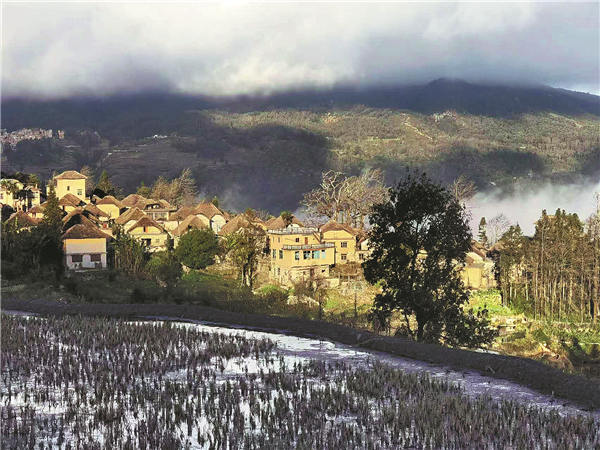

University professor recognized by UN as rural areas develop the means to attract visitors and boost residents' income through innovative approach, Yang Feiyue reports.
In early July, Bao Jigang led a dozen of his students to a rural village that has attracted the world's attention over the years.
Azheke village lies deep in the mountains on the outskirts of Yuanyang county, in Southwest China's Yunnan province, nestled among the millennium-old rice terraces created by Hani people. The terraces were inscribed on the UNESCO World Heritage List in 2013 as a resilient land management system that demonstrates extraordinary harmony between people and their environment, both visually and ecologically, based on exceptional and long-standing social and religious structures.
Explaining that the goal of the trip was for the students to engage in field learning and come up with more methods for rural vitalization, Bao, a professor at Sun Yat-sen University in Guangzhou, the southern province of Guangdong, says that "I had them stay in the village to interact with villagers and appreciate the local intangible cultural heritage, to measure the effects of the vitalization efforts, and answered their questions about approaches that initiate positive changes".
Bao, who is in his 50s, first visited the village in January 2018 to investigate the traditional thatched, mushroom-shaped Hani houses at the invitation of the local government. With its panoramic views across the rice terraces and distinctive architecture that emerges from rolling clouds, Bao appreciated the village's potential for tourism development.
Back then, local villagers lived off the land and had meager incomes, and most young people chose to leave home to make a living elsewhere. As a result, the old houses were crumbling, posing a threat to the inheritance of the Hani traditions and culture.
Bao and his team proposed a poverty alleviation plan which motivated villagers to protect their traditional houses via a dividend system.
The plan involved the Yuanyang county government and the village to jointly establish a tourism company, with 70 percent of profits being distributed among villagers, while the rest covers costs and is put in a development fund.
"Over the past five years, we have distributed dividends to the villagers seven times, with a total dividend of approximately 14,000 yuan ($1,939) per household," Bao says, adding that local tourism development has recovered to the pre-pandemic level this year.
"It is expected that the dividend per household will exceed 10,000 yuan," he says.
Under the plan, the once secluded village has become a well-known destination for travelers from far and wide.